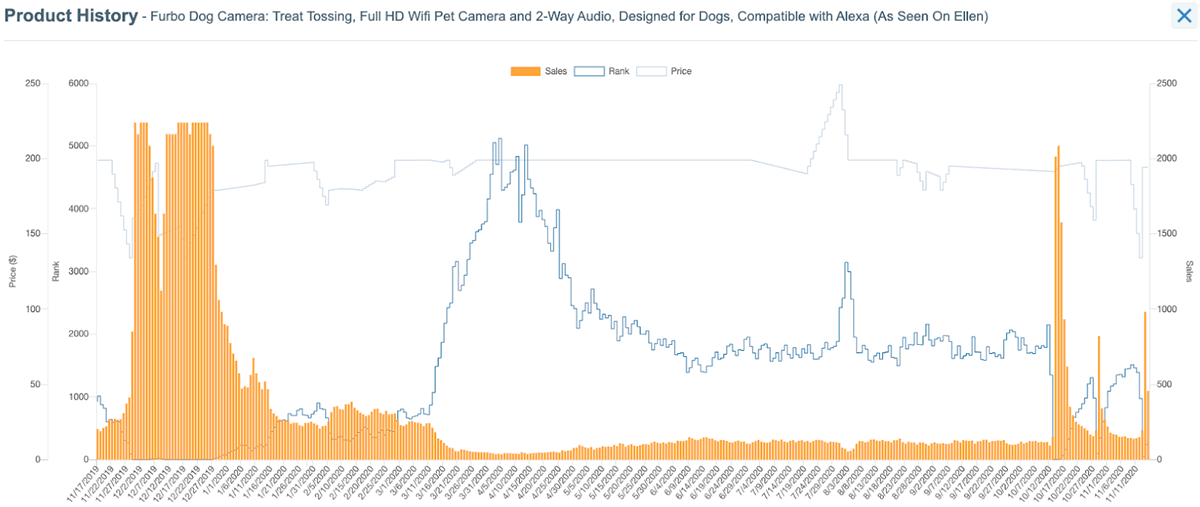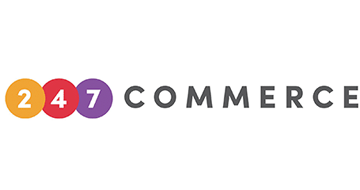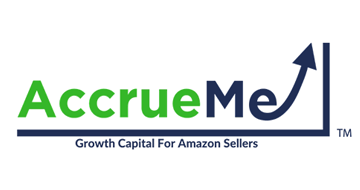This post is by Daniel Sugarman, the CEO and co-founder of Zentail.
Amazon is a place of high risk and high reward. As lucrative as it can be, only 8% of its sellers ever reach $100,000 in sales and hundreds of thousands of new sellers join each year.
Hitting it “big” on Amazon – even for an established brand – requires both a strong offense and a strong defense. It requires a deep understanding of how Amazon works and what makes it unique from any other ecommerce channel.
In this blog, we’ll share some of the hurdles that often trip brands up. We’ve seen these challenges impact even the largest of companies that seek our team’s help, and know full well that unless you’re prepared to tackle these head-on, you’re in for a turbulent ride.
So, without further ado, here are eight pitfalls to avoid when selling on Amazon.
Best Marketplace Research & Stocking Tools
1. Pricing too high, thinking your branding will win out
Amazon isn’t a cakewalk for any brand. It’s one of the rare places where the playing field is level between brands big and small – where a strong reputation doesn’t equate to immediate success, due to the wide range of alternatives available on the site.
There is also evidence to suggest that most buyers on Amazon aren’t brand loyalists. 78% of searches on Amazon are unbranded, and 65% of surveyed consumers said they feel comfortable buying from sellers they’ve never heard of before on marketplaces.
As a result, companies that place too much store in their branding when they set their prices on Amazon can wind up hurting their chances of success. We see this in the pet category, where Furbo prices its dog camera nearly three times higher than its closest competitor at times.
Amazon sales for Furbo are volatile year round, as reflected in data from AMZScout, and only seem to jump momentarily during the holidays. Furbo’s rankings decline during other times of the year, when lesser known, more affordably priced competitors are able to swoop in.

The takeaway: Check your ego at the door and do your due diligence before solidifying your Amazon price strategy. It’s possible that some of your products aren’t appropriate for Amazon if the playing field consists of mostly “dirt cheap” alternatives. Or, Amazon may be better suited for liquidating your out-of-season or excess inventory. Either way, don’t bank on your brand being the exception to the rule on Amazon.
Instead, start by determining your lowest selling price. Then go to Amazon or use tools like AMZScout to research the pricing and performance of competitors that rank on the first page of your target keywords. Your prices should be within a reasonable range (no higher than 20% above the highest price on page one). Test several price points to try and maximize your profits, but make first-page ranking a priority in order to boost sales.
| Keep track of your business numbers with ease. Accounting is important, especially when you’re selling in different countries. Freshbooks helps you track expenses, customize invoices, run reports, and everything else all from one place. You can try Freshbooks for free for 30 days. Sign-up today! |

Try Freshbooks 30 days free trial Now !
2. Getting lazy with listings
This becomes all too easy to do when you’ve got a large catalog or a jam-packed schedule. However, you do yourself a disservice by taking a set-it-and-forget-it approach to listing, or copying and pasting your listings from one channel to another.
Not only do you risk duplicate content issues on Google, where Amazon will almost always rank above your site pages, but you also risk getting overlooked or penalized by Amazon’s algorithm.
For instance, traditional SEO (for Google) favors shorter titles, but on Amazon, longer, more detailed titles often rank higher. Third-party sellers are known to max out their character counts; using this type of approach, one brand drove seven times more monthly orders to their listings within two months of updating their titles.
Data quality can also be a make-it-or-break-it factor on Amazon. Brands too often miscategorize their listings or skimp on product details, destroying their changes of ranking on the first page (or even the first ten pages) of their target category.
To complicate things further, Amazon is known to automatically re-classify ASINs if words within the listing suggest it belongs to a different category, and it’s entirely on you to report these errors to Seller Support. Case in point: this HEXBUG toy was miscategorized as a pesticide by Amazon, according to its seller.

The takeaway: Tailor your listings to Amazon and keep in mind that by going beyond the required attributes, you can set better customer expectations and minimize returns, plus ensure that you’re not excluded when a buyer filters the search results.
Take the time to optimize your listings for better Amazon SEO. If you’ve got a large catalog, you can always start with your best-selling listings and gradually work your way through the rest. Or, you can use ecommerce listing software to automate the process or make bulk edits. The best software can help identify gaps in your data or categorize your SKUs for Amazon.
Bonus tip: Using other tools at your disposal, like A+ Content (formerly EBC), can help to reduce bounce-offs from your product detail pages, build trust around your brand and increase sales. Don’t hesitate to experiment with those if you can!
| Do you have a great business idea, but you don’t know how to get started selling online? Helium 10. With Helium 10, you can find all the information needed to make data driven decisions. The platform is packed with features that help you find new customers, drive sales, and manage your day-to-day operations. So whether you’re just getting started or you’ve been in business for years, Helium 10 has everything you need to take your business to the next level. You can get 20% discount on Helium 10 with the following promo code: WEBRETAILR20 |

Get 20% discount on Helium 10 from us
3. Failing to keep up with marketplace changes
In addition to requiring unique SEO practices, Amazon has strict listing requirements that regularly change. Brands that aren’t regularly monitoring them could wake up one day to find their items hidden from the search results.
For example, when Amazon announced its new apparel size standards, thousands of brands were suddenly under pressure to reformat and optimize their listings. While updates from Amazon can be confusing to track and understand, you certainly don’t want to miss the memo.
Note that it’s not uncommon for Amazon to release changes with very short notice. Even if you’ve got tens of thousands of listings in your catalog, Amazon isn’t likely to push back its release date or relax requirements just for you.
The takeaway: Be vigilant and have a process in place for adapting to new Amazon changes. If that’s not practical, find a software platform or agency that can handle the process for you.
The rules of engagement are constantly changing and you need to keep your eyes peeled to spot each change. Ask your software partner or agency how they approach things like this; some may choose to simply leave the burden on you, the seller.
4. Overstocking
Inventory management is an ongoing challenge, regardless of the channel you sell on. But on Amazon specifically, brands tend to overestimate demand around shopping events like Prime Day, or they buy a ton of inventory before they’ve really figured Amazon out. New sellers sometimes stock up on items that they think will sell fast, only to face listing errors that prevent them from making a single sale.
Things get even trickier when FBA is involved. Long-term storage and removal fees will rack up if your inventory doesn’t move. Not to mention, relying heavily on FBA can be a risky strategy (see tip #8).
The takeaway: Do not assume that the sales you see on your own site or other marketplaces will translate to Amazon. It attracts a unique audience with different buying behaviors and preferences. You can use tools like AMZScout and Helium 10 to see sales trends around a certain product category.
Ultimately, though, you’ll want to start building your own sales history and learn the trade-off between lost sales due to stock-outs versus excess storage charges due to slow-moving inventory.
Consider processes and tools that can help you work outside of the traditional 30-, 60- or 90-day reordering windows. It may work in your favor to make smaller, more frequent purchases, depending on the type of product you sell.
5. Passively awaiting reviews
It’s a well-known fact that reviews matter. But it’s also a well-known fact that Amazon doesn’t want you to solicit reviews. The following is strictly prohibited by the marketplace:
- Offering a reward for a positive review
- Requesting a positive review (rather than any type) via packaging, box inserts or buyer-seller messaging
- Posting fake reviews
- Bribing a customer to retract a negative review
View a full list of common transgressions.
This has paralyzed some brands from taking any sort of proactive action, despite knowing that the best-ranking products on Amazon tend to have at least a few hundred reviews, if not thousands.
There are resources like Amazon Vine and the “Request a Review” button that are fully compliant with Amazon’s code of conduct. You can additionally leverage ads, work with influencers or plan marketing campaigns to “prime the pump” for more reviews.
The takeaway: Don’t sleep on the review collection resources that are available to you. Beyond what’s mentioned above, there are Amazon-approved third-party apps, like FeedbackWhiz, that can automate communication with your buyers. Take care to make sure your product listing, order fulfillment and customer service are as good as they can be, before you invest time into collecting more feedback.
After all, it’s going to be hard to receive positive remarks if packages are regularly shipped late, listings are incomplete (and therefore potentially misleading) or you already have negative feedback on your product. Address the gaps, then do what you can to spread the word about your product.
6. Leaving your defense down against bad actors
Here’s an ugly truth about Amazon: it’s still a popular feeding ground for counterfeiters, unauthorized sellers and bad actors, despite Amazon’s best efforts at fighting them.
And no, I wouldn’t say this is a reason to avoid Amazon. The good far outweighs the bad for most brands and it may actually make matters worse if you’re not present on the channel. For instance, Amazon largely works on a first-come-first-served basis; the first merchant to add a new item often has the most influence over its listing.
You thereby gain an advantage by listing your products first. And once you have opened an account with Amazon, you can enroll your brand in Brand Registry, which offers greater protection against knock-offs or unauthorized sellers.
There are many other dirty tricks that Amazon sellers try to play, hoping to rig the system or knock down competitors. While not a glamorous part of the job, you’ll need to keep your guard up against such attacks and be quick to report them.
The takeaway: At a minimum, join Amazon’s Brand Registry. Establish yourself as the brand-of-record for your items and leverage Amazon’s proactive protection services. Use A+ Content, and images that prominently display your logo or serial codes, for example, to thwart counterfeiters.
7. Letting finances run amok
“Turnover is vanity; profit is sanity”. For some sellers, their downfall is a result of constantly chasing new sales and throwing money at new products, expensive consultants and other shiny objects.
Their expenses rack up in the background, and their organization, despite how large it has grown, still goes belly up.
Similarly, some brands falsely assume that the product getting the most sales is adding money to their pockets. In reality, the cost of production, storage, shipping, taxes and marketing may be greater than their earnings.
The takeaway: Top-line revenue isn’t a strong benchmark on its own. There are many other factors that you should consider, including how efficiently you’re turning that revenue into profit.
Use an accounting app, like QuickBooks or Xero, to help keep things in check. And consider ways to reduce costs, like outsourcing fulfillment or trimming down inventory, to improve your margins.
8. Placing all your bets on FBA
Two-thirds of Amazon sellers rely entirely on Amazon FBA. It’s an attractive option for those who want to outsource fulfillment or need a way to make their products Prime eligible.
At the same time, brands that are overly reliant on FBA put their businesses at risk, though they may not realize until after disaster hits. Let’s take the recent pandemic as an example. In March 2020, Amazon temporarily banned all nonessential items from FBA. This put thousands of sellers in disarray.
Outside of the pandemic, there’s the looming threat of getting cut off from your inventory if, say, your Amazon account gets suspended for reasons that may or may not be your fault.
The takeaway: There are obvious perks of FBA, but you should also know the risks you’re taking on when you sign up. Evaluate the pros and cons of using FBA against fulfilling from your own warehouse or using a third-party logistics partner (3PL).
In general, you’ll want to diversify both your supply chain and sales channels to avoid giving Amazon too much control over your company. Anything can happen when you’re selling on the marketplace, and no brand is immune to a sudden disruption of their account.
A strategy for success
Amazon offers an abundance of opportunities for businesses that want to grow brand awareness or tap into new revenue streams.
That being said, you must understand why many businesses fail on Amazon – and how to avoid making the same mistakes. Hopefully, this article offered some clarity.
The bottom line is that success requires a strong strategy, both in terms of how you’ll boost your sales and how you’ll protect your brand. You can’t do one without the other.
This post was by Daniel Sugarman, the CEO and co-founder of Zentail, an ecommerce operations platform for multichannel brands and resellers.
The Zentail platform is trusted by top 1,000 Amazon sellers and is consistently rated five stars for its AI-driven automation, ease of use, and reliable integrations into today’s best marketplaces.












Leave a Reply